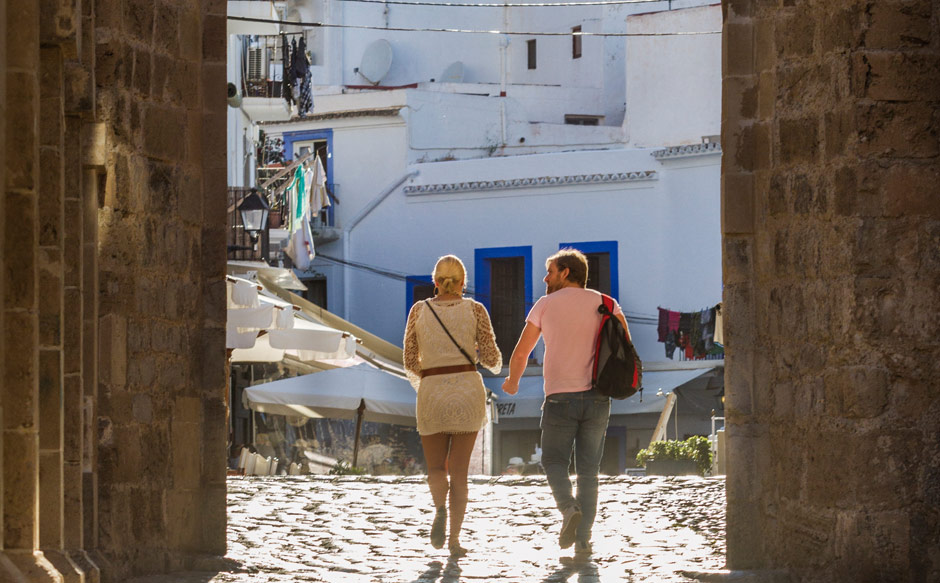The romantic cobbled alleyways and magnificent views are an invitation to stroll along the walls and bastions of the ancient citadel.
The fortified town of Dalt Vila, the scene of battles and invasions due to its strategic position between the eastern region of Spain and North Africa, was inhabited by the Phoenicians in the 7th century BC. Here civilisations erected and defended their Roman, Muslim and Christian temples. In the mid-16th century, Philip II of Spain ordered the defensive reinforcement of Ibiza, and the construction of the extraordinary network of walls and bastions that was recognised as a World Heritage Site by UNESCO in 1999.
The old Phoenician capital, opening out to the sea, condenses 27 centuries of history within the walls of Dalt Vila. It is a peaceful journey to the past, essential for understanding the origins of the island. Contemplating the panoramic view of the sea at the foot of the cathedral or the old Town Hall is a moving experience indeed.
The Renaissance architecture and its romantic cobbled streets are an invitation to stroll within its walls. From above, the views of the port and of Formentera are spectacular. Dalt Vila is also where the Gothic cathedral is found, and the ancient Almudaina building, which is being restored as Parador Nacional (state-owned hotel), the first in the Balearic Islands. The Diocesan Museum, the Casa de la Curia (now a tourist information office) and the Madina Yabisa interpretation centre are recommended visits, as is the renovated Museum of Contemporary Art and the Convent of the Dominican Friars, the former seat of the town council.
Below the walls, in the streets of the old fishermen’s quarter of Sa Penya, in La Marina, the port, in the central boulevard of Vara de Rey, in the main thoroughfares or the bubbling Plaza del Parque, is where the commercial, administrative and leisure activity is concentrated.



